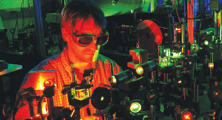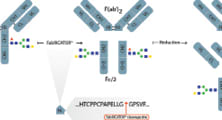The Art of Analysis
May 28, 2014
In August, The Analytical Scientist will publish a special issue celebrating the very best images in the field of analytical science. And you have the chance to submit an image that defines your work.
1 min read

False
May 28, 2014
In August, The Analytical Scientist will publish a special issue celebrating the very best images in the field of analytical science. And you have the chance to submit an image that defines your work.
1 min read

May 28, 2014
Deeper consideration of individual analytical unit processes offers a more systematic approach to method development, ensuring that we don’t forget the basics in an increasingly sophisticated world.
1 min read

May 27, 2014
What has driven spectroscopic techniques into their current prominent position in a plethora of application areas? Here, Gary Hieftje, Peter Griffiths, and Volker Deckert combine over 120 years of experience to assess past successes – and failures – and to offer a glimpse of our light-filled future.
1 min read

May 27, 2014
Bringing biopharmaceuticals and biosimilars to market with 2D-LC
1 min read

May 27, 2014
Highly specific enzymes for middle down approach - rapid mass spectrometric analysis of antibody based biotherapeutics using FabRICATOR®
1 min read

May 27, 2014
Gun crime is not going away, but current forensic tools are limited at best. We believe that attenuated total reflectance (ATR) imaging could fill a big gap in the crime scene investigator’s armory.
1 min read

May 27, 2014
Let’s not boast of “complete proteomes” or “protein coverage” until we correct our ignorance of post-translational modifications. Proteome analysis is more than just identifying and counting proteins.
1 min read

May 27, 2014
How to meet today’s demands for nanoscale chemical analysis in materials and life sciences.
1 min read

May 27, 2014
New methods that focus on increased sensitivity or resolution are being developed on an almost daily basis. But are they the right methods and do we even need them? I say “no and no,” and here’s why.
1 min read

May 27, 2014
Sitting Down With Ellen Miseo, instrumentation and applications consultant for Analytical Answers and adjunct assistant professor at Bentley University, Massachusetts, USA.
1 min read

False
False
False